Three years of full-scale war: with no respite in sight, aid remains a lifeline for millions of people

Aid is a lifeline for front-line communities
On the morning of 23 January, 65-year-old Artem was already awake when a deafening explosion shattered the silence in his Kramatorsk neighbourhood in the Donetsk Region. The blast tore through his home, leaving him injured and his house in ruins.
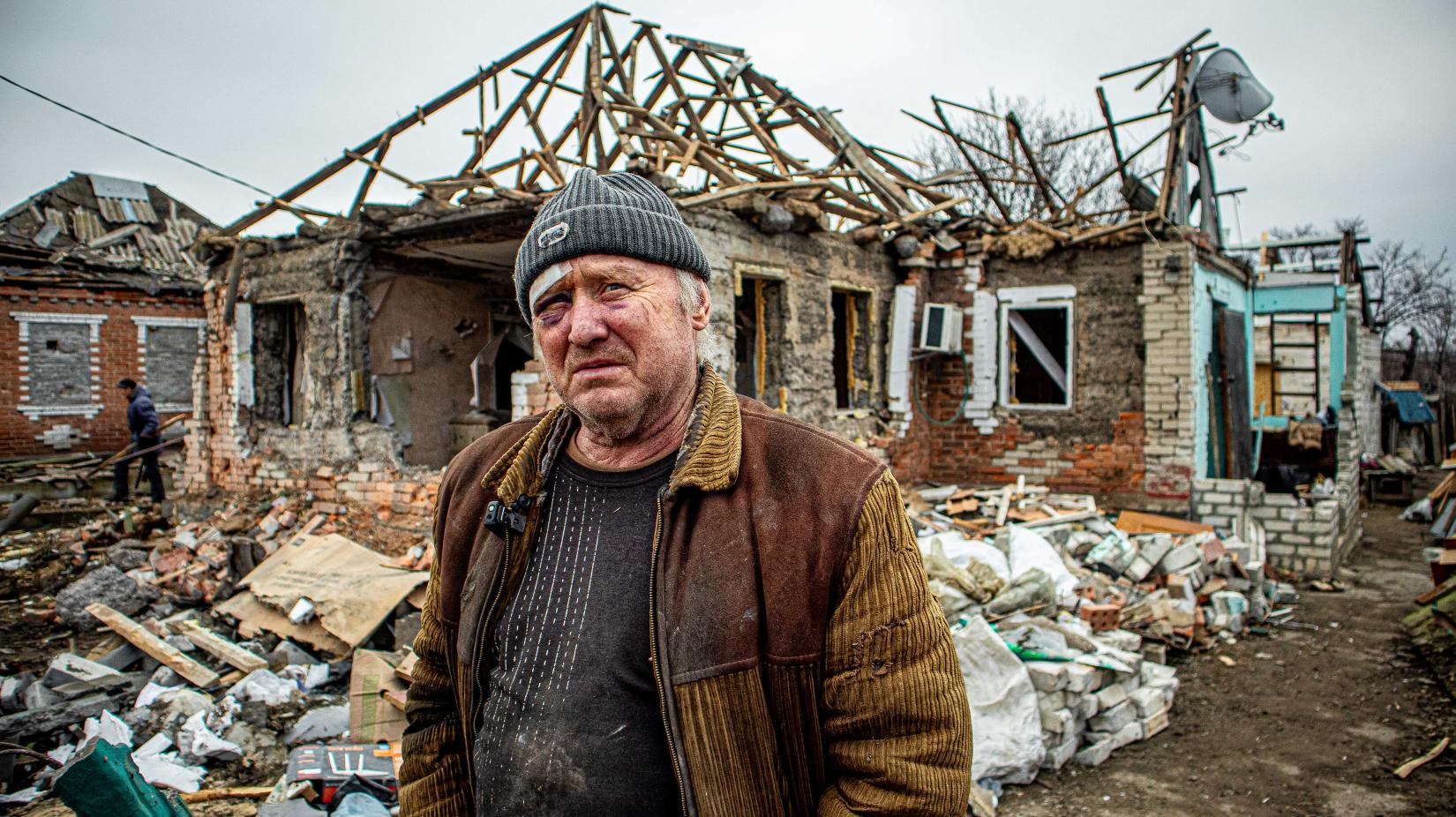
"I live alone, with no one to help me."
Despite his wounds, Artem could not afford to wait. He began repairing his house, little by little, piecing together what he could. When a humanitarian team from the non-governmental organization (NGO) Angels of Salvation arrived with construction materials, he felt a moment of relief.
"With the materials, I will try to fix at least a small part of the house, so I have a place to stay this winter," he said.
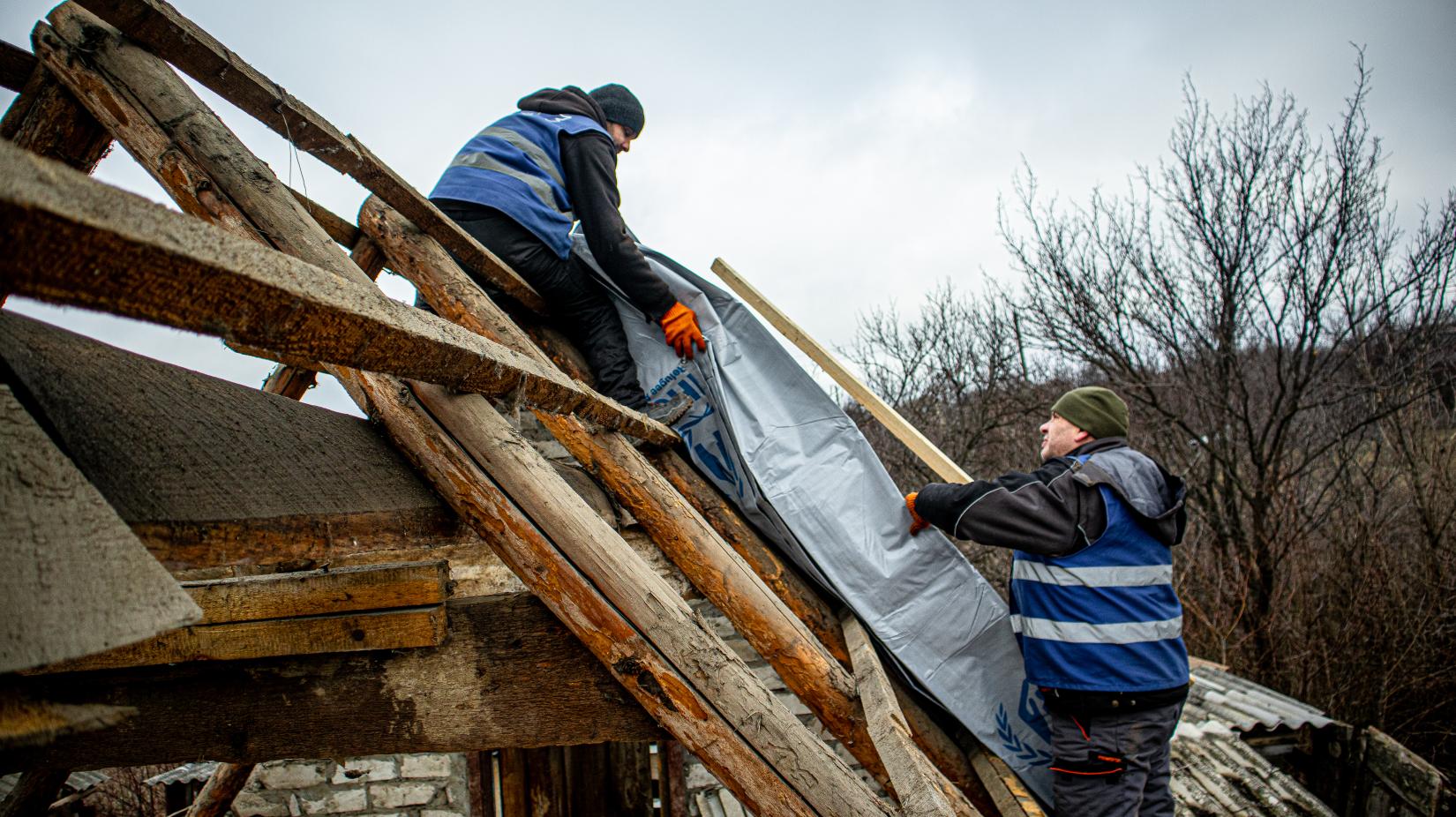
For thousands of people living near the front line, daily shelling is now an inescapable reality. With homes reduced to rubble and energy infrastructure under constant attack, civilians face Ukraine’s brutal winter with few resources.
As Ukraine enters the fourth year of Russia’s full-scale invasion, an estimated 36 per cent of the population will require humanitarian assistance in 2025. Hostilities rage daily along a 2,000-km front line, putting civilians in constant danger.
There has not been a single day without shelling or fighting in the past three years. Hostilities escalated sharply last year; the front line expanded by 15 per cent, particularly in the Kharkiv Region, while violence intensified in the Donetsk and Sumy Regions, triggering even greater humanitarian needs.
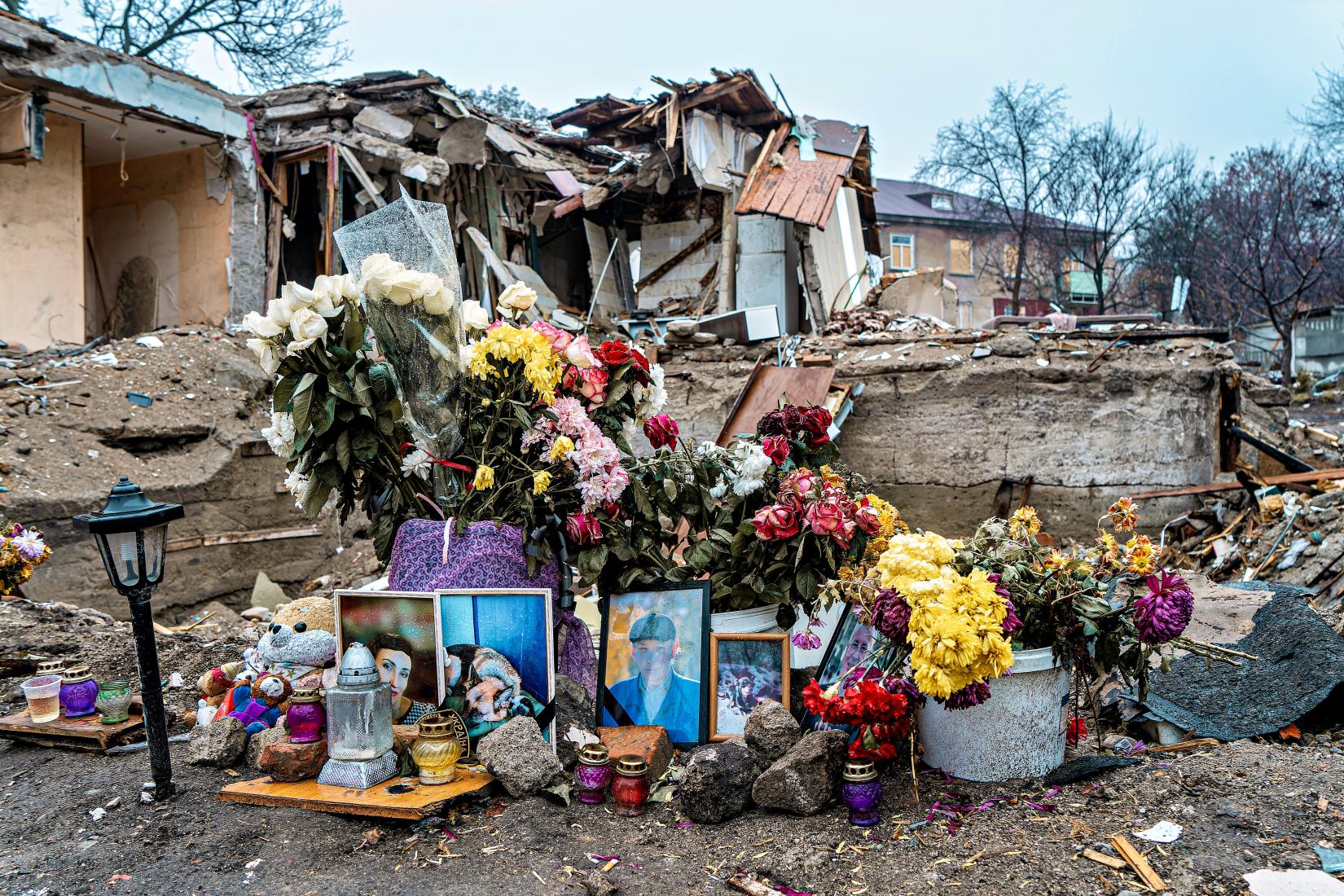
When fleeing is the only option
"I didn’t want to leave until the very end. A community stands as long as someone lives in it but falls apart when its residents leave. But then my house was destroyed," says Nataliia, 67, showing pictures of the ruins of her home in Rubizhne, Luhansk Region.
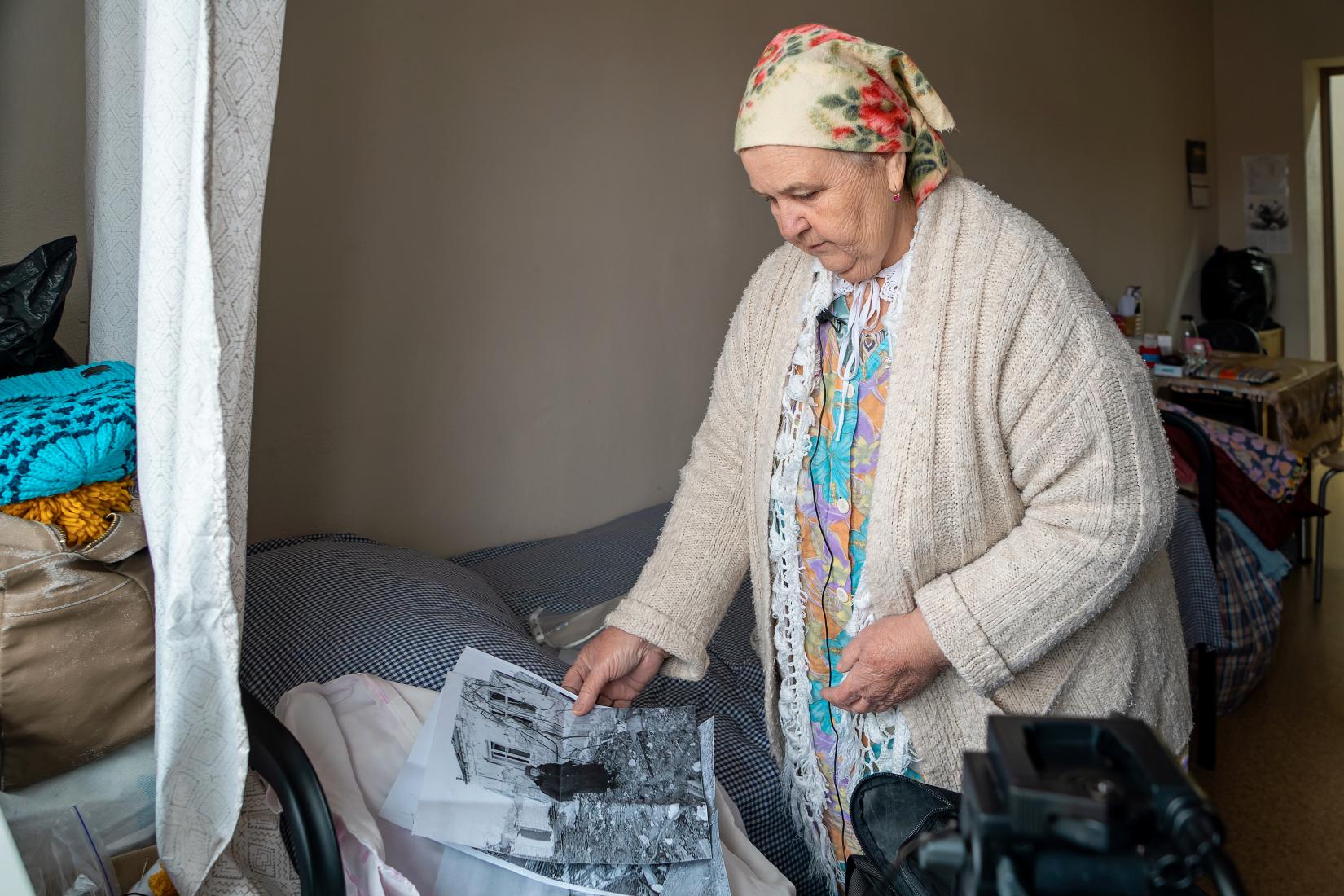
"A community stands as long as someone lives in it but falls apart when its residents leave."
Like millions of other Ukrainians over the last three years, Nataliia had no choice but to uproot her life and begin again. She now lives in a collective shelter in Odesa, with support from the Ukraine Humanitarian Fund (UHF).
The war’s escalation in February 2022 triggered Europe’s largest displacement crisis since the Second World War. As of January 2025, 3.7 million people remain internally displaced in Ukraine, while 6.9 million have sought refuge abroad, unable to return to lives and livelihoods that no longer exist.
Constant attacks on front-line communities force civilians to evacuate from the only homes they’ve ever known, often leaving everything behind.
The war's toll on health care
The war is placing an immense strain on Ukraine’s health-care system, vastly increasing the need for trauma care and mental health practitioners.
Since February 2022, the World Health Organization has recorded more than 2,200 attacks on health-care facilities, which constantly threaten the lives of doctors, patients and healthcare workers.
During his visit to Ukraine in January, the Emergency Relief Coordinator (ERC), Tom Fletcher, said: “It is sobering to walk through a completely bombed-out medical clinic in Zaporizhzhia, knowing that 11 people – including four medical staff – lost their lives there just weeks ago.”
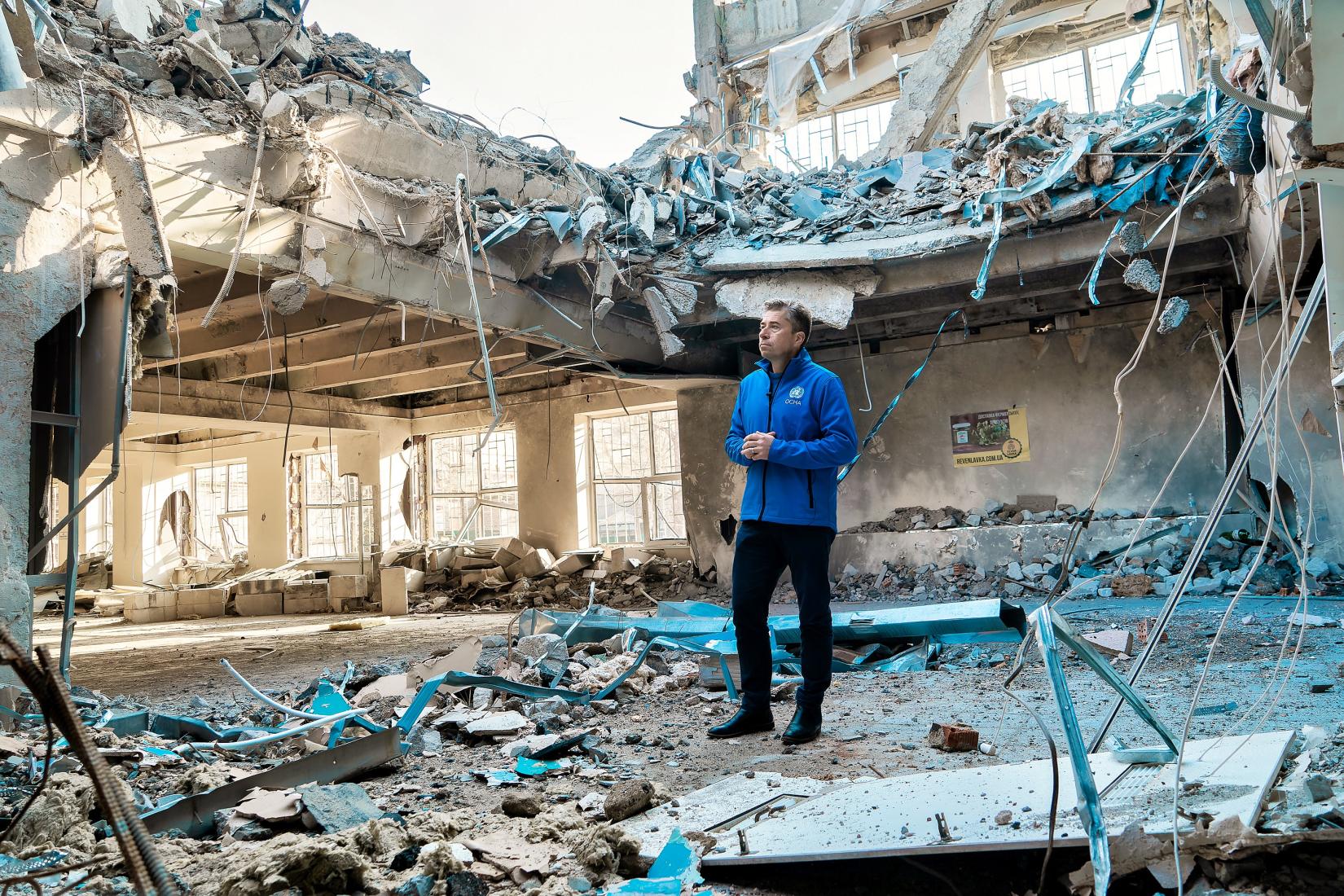
Yuliia – a pharmacist with the NGO Vashe Misto – supports vulnerable people at a medication distribution point in Odesa. She and her family were displaced from Kherson amid intense fighting.
"Due to the war, many people – including older people, families with young children and people with disabilities – have lost their livelihoods,” she explained. “Every day they face a difficult choice: whether to buy food, medicine or pay for utilities."
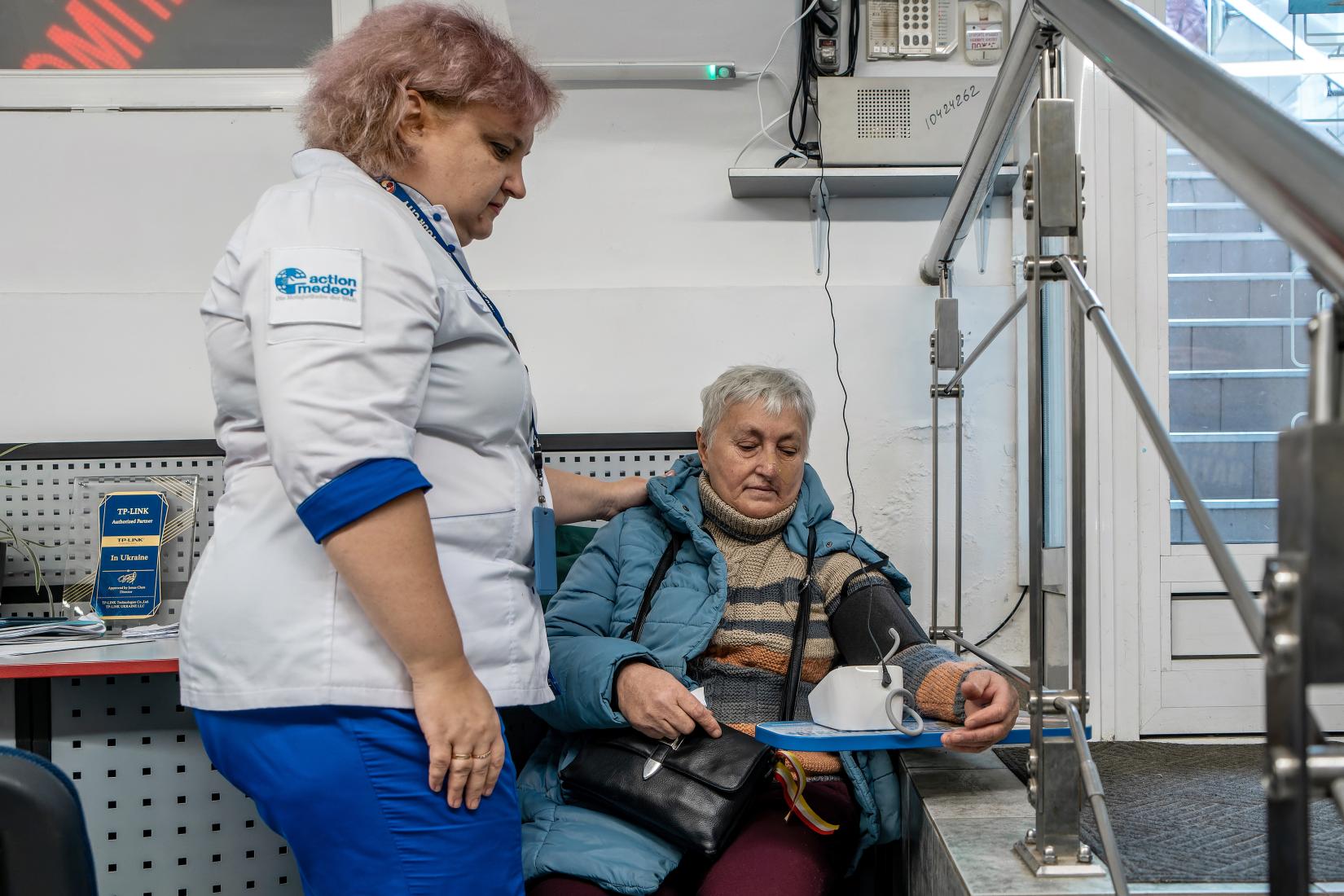
Children bear the brunt of air strikes and displacement
“All I could think about while fleeing my hometown was the safety of my children,” said Anastasiia, a mother of three who escaped amid intense fighting in the eastern Donetsk Region. “It was very hard for them to lose their home, school and friends. Their education was interrupted while we searched for a new place to live.”
UNICEF reports that an average of 16 children are killed or injured every week in Ukraine. More than 3,600 schools and universities have been damaged, and 600,000 children are still forced to learn remotely because their classrooms are either in ruins or too dangerous to reach.
Anastasiia and her family eventually found a vacant home in a village. But, with limited resources, they rely on humanitarian aid to get by.
She explained: “Now that we have firewood to heat our home through the winter, we can focus on education and rebuilding our lives.”
Aid workers help families like Anastasiia’s across Ukraine, ensuring children receive protection and support.

The world must not look away from Ukraine
“In 2022, my friend Zhenya Sanin evacuated hundreds of local residents who were under attack in Kharkiv,” said Yevhen Koliada, Head of the local NGO Relief Coordination Centre. “A year later, he was killed while delivering aid to front-line communities.”
Zhenya’s name is now engraved on the memorial at the Alley of Volunteers in Kharkiv. More names are added regularly, Yevhen says. “These were heroes who sacrificed everything – even their lives – to save their neighbours.”
Over the past three years, at least 25 aid workers have been killed in Ukraine, with 86 others injured. Drones, missiles and glide bombs ramp up the risk for civilians and those trying to serve them.
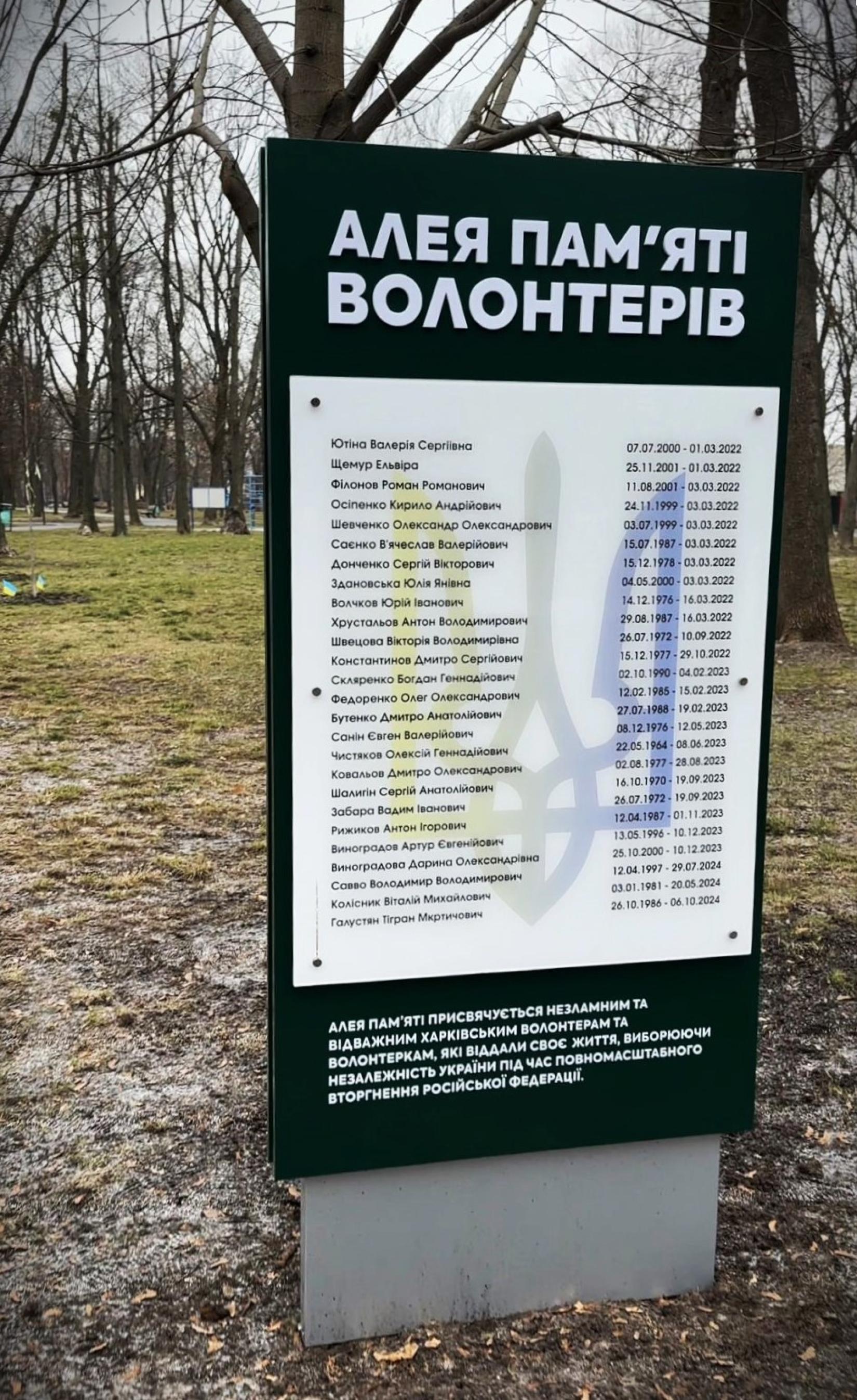
But despite the danger, humanitarians continue to deliver.
Last year, national NGOs, local volunteers, international organizations and UN agencies provided life-saving aid to more than 8 million people affected by the war, prioritizing people in front-line areas. Nearly 50 inter-agency humanitarian convoys navigated dangerous routes to deliver 580 tons of essential supplies – food, water, medicine and winter provisions – to communities struggling to survive.
Every day, 600 organizations – most of them Ukrainian NGOs – demonstrate the resilience and strength of local communities. Their leadership in crisis response is a testament to the power of solidarity and determination, proving that even in the darkest times, help can reach people who need it most.
This year, humanitarian organizations will work to reach 6 million of the most vulnerable people, providing food, healthcare, shelter, cash assistance, education, protection and other life-saving aid. The focus will remain on people facing extreme need in front-line areas and other high-risk regions.
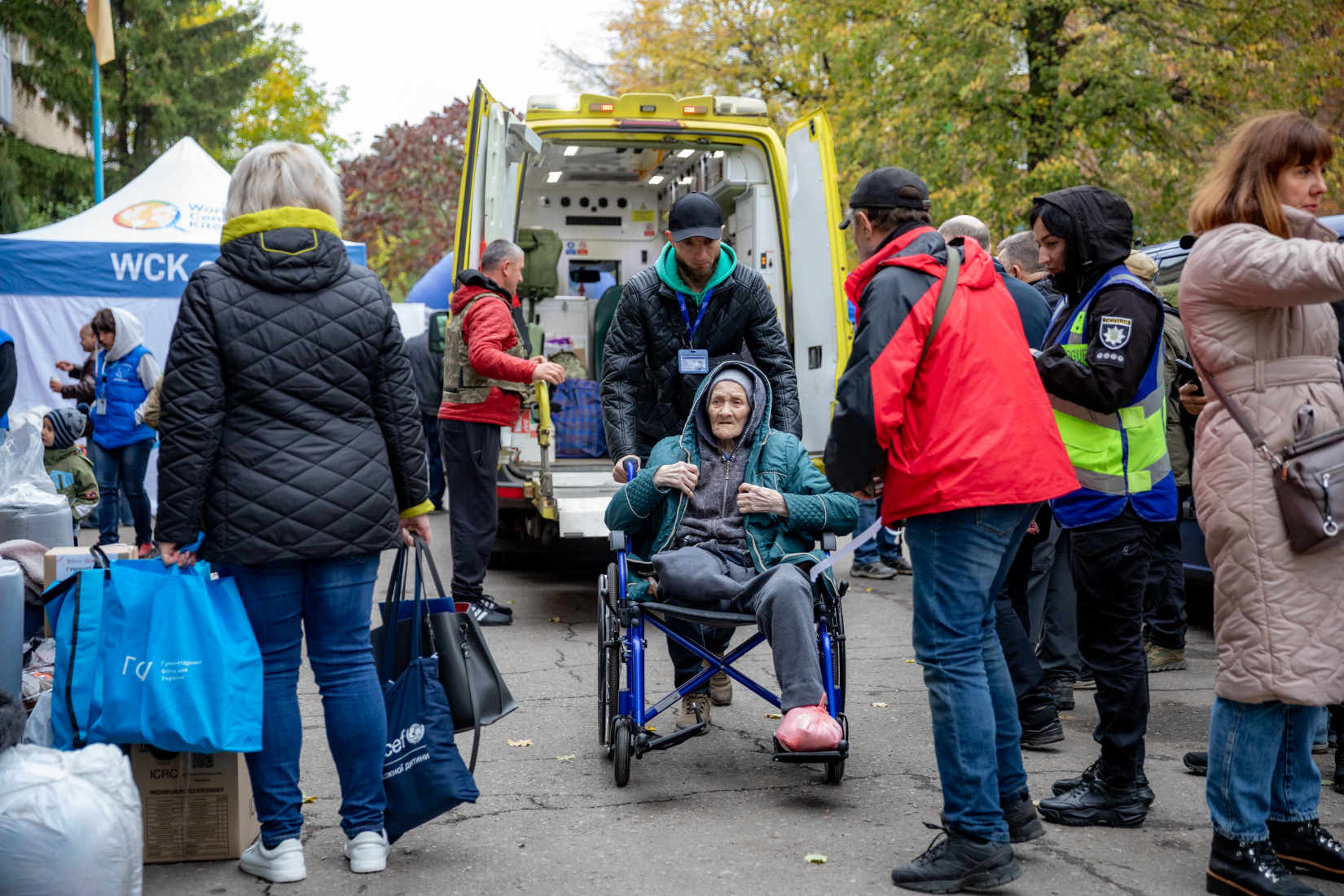
At the launch of the 2025 Ukraine Humanitarian Needs and Response Plan, ERC Fletcher said: “As humanitarians, we are committed to stand with the people of Ukraine for as long as it takes. Ultimately, we must redouble efforts to bring this war to an end so that the Ukrainian people can build their future with security, justice and opportunity.”
"As humanitarians, we are committed to stand with the people of Ukraine for as long as it takes."
Tom Fletcher, UN Humanitarian Chief

